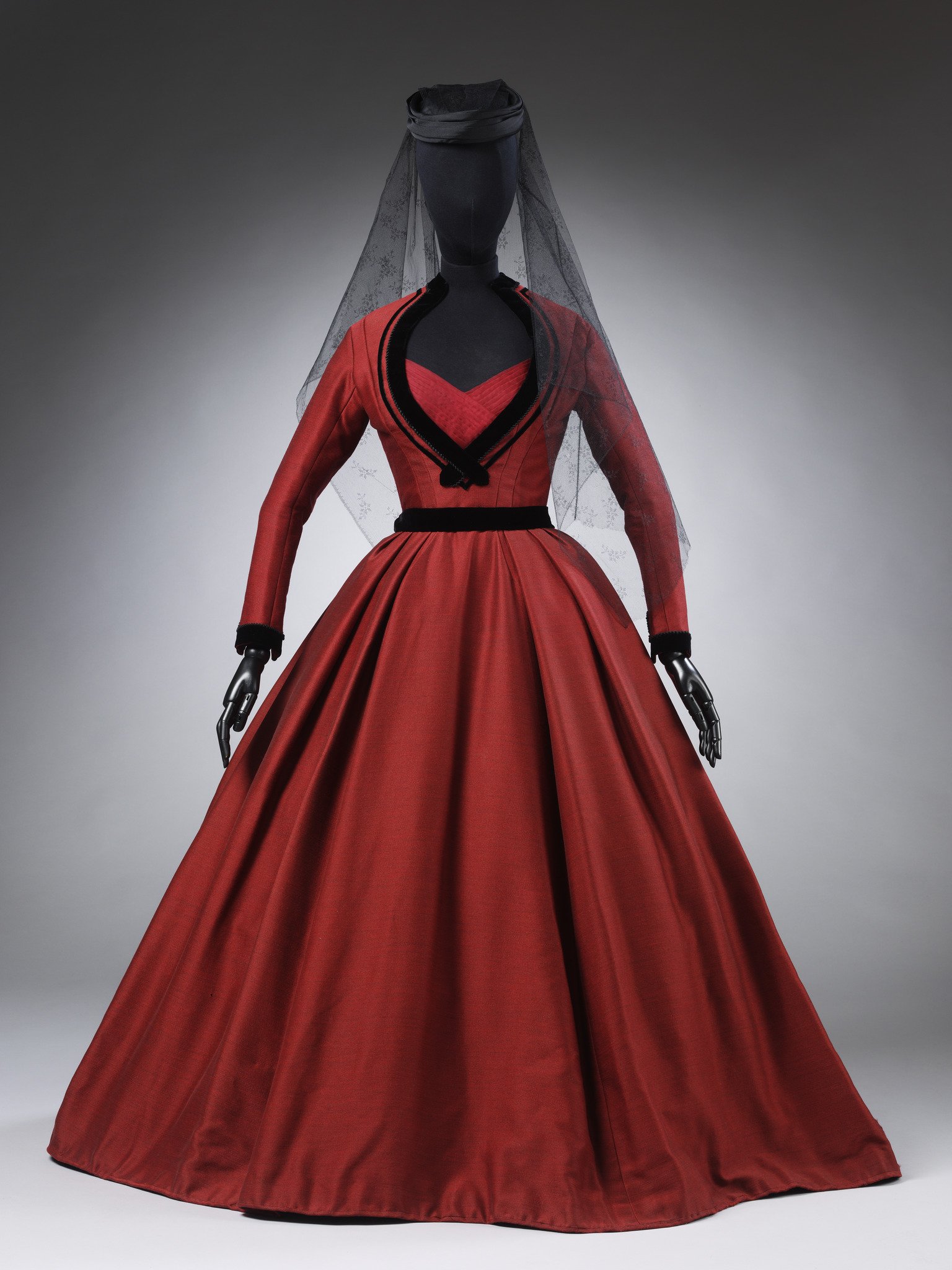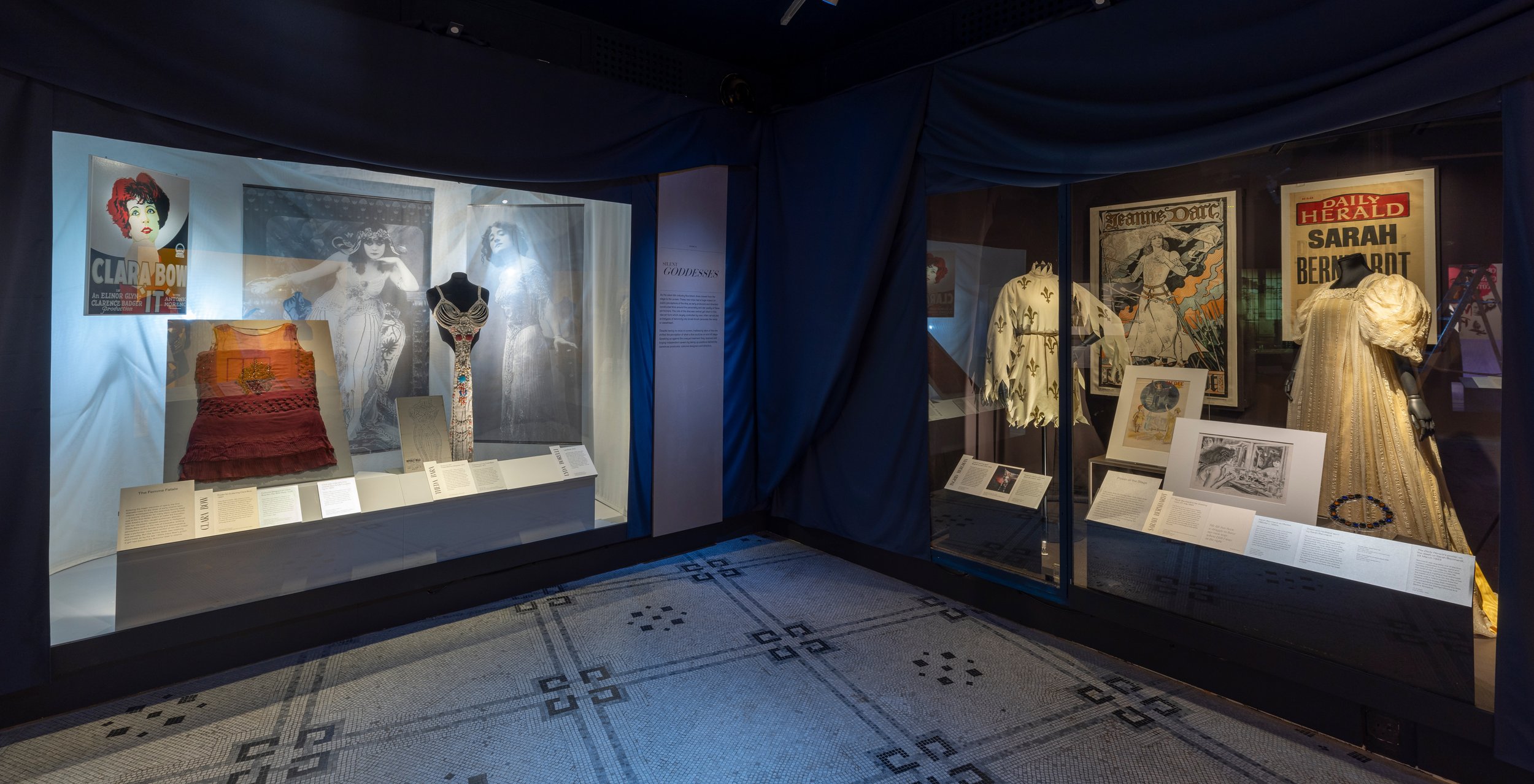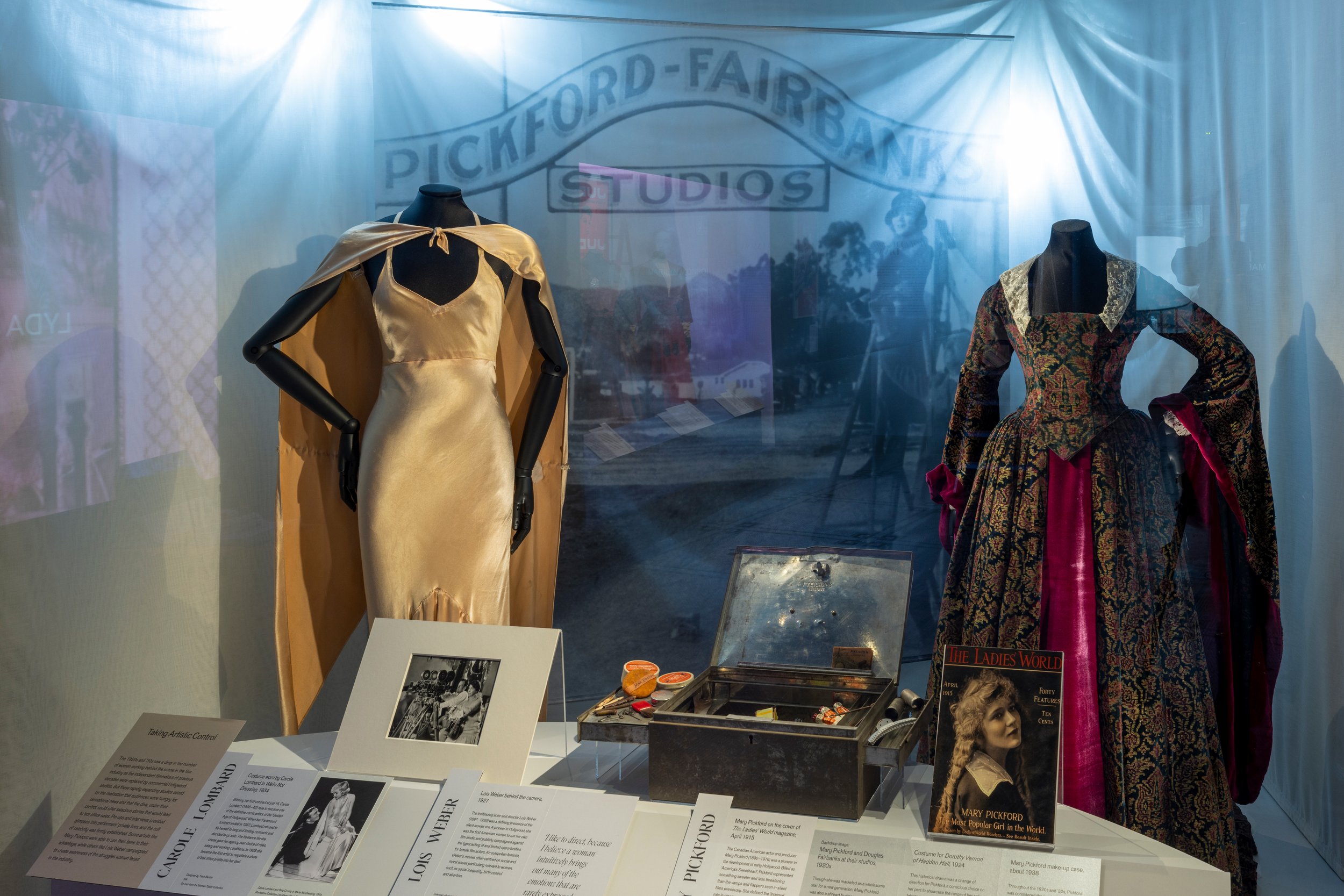Act One: The V&A DIVA Exhibition
by CHAD KENNERK
The Victoria and Albert Museum (V&A) recently unveiled the exhibition DIVA, which celebrates the creativity and power of performers who have become enduring forces and voices in pop culture. The first of its kind to cover such a wide variety of artists from the 19th Century to today, DIVA displays some 60 ensembles and 250 objects from the V&A collection and from loans across the world. Highlighting the many powerful and personal stories of Divas that challenged the status quo, the exhibition explores the term ‘Diva’ (‘goddess’ in Italian) and how the word was subverted and later reclaimed. The three ‘Acts’ of the exhibit span film, fashion, photography, design, music, and live performance. ‘Act One’ provides historical context to the creation of the Diva, placing a spotlight on goddesses of the stage and screen. DIVA is on view now through 7 April 2024 at the V&A, and is accompanied by a companion publication. Film Review spoke with lead curator Kate Bailey and project curator Veronica Castro about the silent film sirens and Golden Age stars represented in Act One of DIVA.
In conversation with Kate Bailey, Curator of DIVA and Veronica Castro, Project Curator of DIVA.
Film Review (FR): ‘Act One’ includes an exploration of screen goddesses who helped shape popular culture. How did the exhibit come together and what are some of the costumes and films represented?
Kate Bailey (KB): I started developing an exhibition idea about the Diva back in 2015 when I was curating the Opera: Passion, Power and Politics Exhibition at the V&A. I was fascinated by the story of the diva, the art and lives of iconic performers and the lineage of female artistry. Our film costumes cover early silent cinema through to the Golden Age Hollywood and beyond, including the iconic fur-lined party dress designed for Bette Davis from All About Eve, Ingrid Bergman’s Joan of Arc tunic and a 1920s-does-Elizabethan gown worn by Mary Pickford in Dorothy Vernon of Haddon Hall. We’re also showcasing Mae West, Marilyn Monroe, Elizabeth Taylor and Joan Crawford among others!
(FR): Many items have rarely been displayed or appear on display for the first time. Which film costumes fall into that category and are there any in particular that stand out in terms of rarity?
Kate Bailey and Veronica Castro (KB&VC): We believe this is the first time the Edith Head-designed look for Davis has been displayed, as well as Mae West’s wedding look from I’m No Angel. Our silent movie costumes are obviously some of the oldest we have on display – we have a part of one of Theda Bara’s incredible costumes from the lost 1917 Cleopatra, which we don’t think has been seen outside of the US before. Same goes for the Mary Pickford objects and many of our other film costumes actually!
(FR): The fabrics of many of these pieces are susceptible to ageing. Can you talk about the importance of preservation and how preservation was addressed in designing DIVA?
(KB&VC): In order to ensure the long-term existence of these costumes and objects, our conservation efforts are absolutely paramount to the work we do here. We have an incredible textile conservation and mounting team who are experts in the careful handling, stabilisation and mounting of the costumes. Meanwhile our preventative conservators assess and monitor the environment in our display cases and the gallery space itself – maintaining appropriate light, temperature and humidity levels, for instance.
Our visitor experience staff work tirelessly to keep an eye on the day-to-day experience of visitors within the galleries and report any potential issues as they arise. It’s a real team effort. In terms of costume, specifics will vary according to the garment, but for instance, we have a dress designed for Clara Bow which is displayed on an angled board rather than a mannequin, due to its age and fragility.
(FR): A large portion of the exhibit is compiled from items on loan. Can you speak about the process of loans for this exhibit and working with outside collections such as the Norman Tipton Collection and the collection of Greg Schreiner?
(KB&VC): About half of the objects in the show are loaned-in. Securing the costumes was a case of good old-fashioned research coupled with all of the usual practical concerns – Is the costume available? Where is it currently? What condition is it in? How do we get it to London? We’ve been very lucky to have worked with a group of lenders who have been really engaged and generous with their time and knowledge.
(FR): Golden Age of Hollywood designers represented include names such as Oscar-winners Edith Head, Irene Scharaff, and Orry-Kelly. These three designers alone garnered a total of 16 Oscars. What do the pieces on display illuminate about these Golden Age designers and how did they play an important role to screen Divas of the studio era?
(KB&VC): We really wanted to highlight the unique collaborative relationships stars can have with their designers, who often did so much to shape the personas of these Golden Age divas. I’m very pleased to say that we have costumes by all three of the iconic designers you mentioned on display. Additionally, we might also consider Travis Banton. Famously linked to Dietrich, he helped build her androgynous mystique with designs such as the tuxedo for Morocco (a clip of which features in the exhibition) as well as her personal wardrobe of tailored separates. He also designed for Mae West, creating silhouettes to accentuate her famous hour-glass figure, which was so much a part of her brand. From the V&A’s own collections we’re displaying the gorgeous Banton-designed wedding dress from I’m No Angel. These performer/designer relationships are explored in greater depth in the accompanying exhibition book.
(FR): In creating this exhibit, did you discover any particularly interesting stories of provenance, either from items on loan or about those within the V&A collection?
(KB&VC): Many of the silent goddesses and Golden Age Diva costumes have amazing stories of survival as they were often discarded by the studios at the end of production and weren’t actively collected by museums at the time. As part of the exhibition research, it’s been really touching to meet private collectors who have saved and preserved some of the most iconic film costumes – their vision, passion, knowledge, and generosity has played an important role in how we can appreciate and display the Hollywood stars in the exhibition.
(FR): Of the film costumes on display, do you have a personal favourite?
(KB&VC): The Cleopatra costume worn by Theda Bara is a personal favourite. This object feels incredibly precious, especially as the film didn’t survive, and it’s great to introduce visitors to Bara’s pioneering career. But I also love the Katharine Hepburn costume designed by Oscar-winning costume designer Sandy Powell and worn by Cate Blanchett in The Aviator. This object introduces an additional layer to the story of the diva – it shows the power of a performer to inspire future films, characters and design and speaks to the intergenerational networks of divas and their influence in the lineage of female artistry, both on stage and behind the scenes.
(FR): In addition to costumes, what other film related objects are on display?
(KB&VC): We have a script annotated by Marilyn Monroe, Mary Pickford’s makeup box and an original wig worn by Elizabeth Taylor as Cleopatra, among other film-related objects. You’ll have to come see the show for the rest!
THE VICTORIA AND ALBERT MUSEUM LONDON (V&A) is the world’s leading museum of art, design and performance with collections unrivalled in their scope and diversity, spanning 5,000 years of human creativity. It was established in 1852 to make works of art available to all and to inspire British designers and manufacturers. Today, its purpose is to champion creative industry, inspire the next generation, and spark everyone’s imagination.
Learn more about the V&A and book tickets to DIVA at: vam.ac.uk





